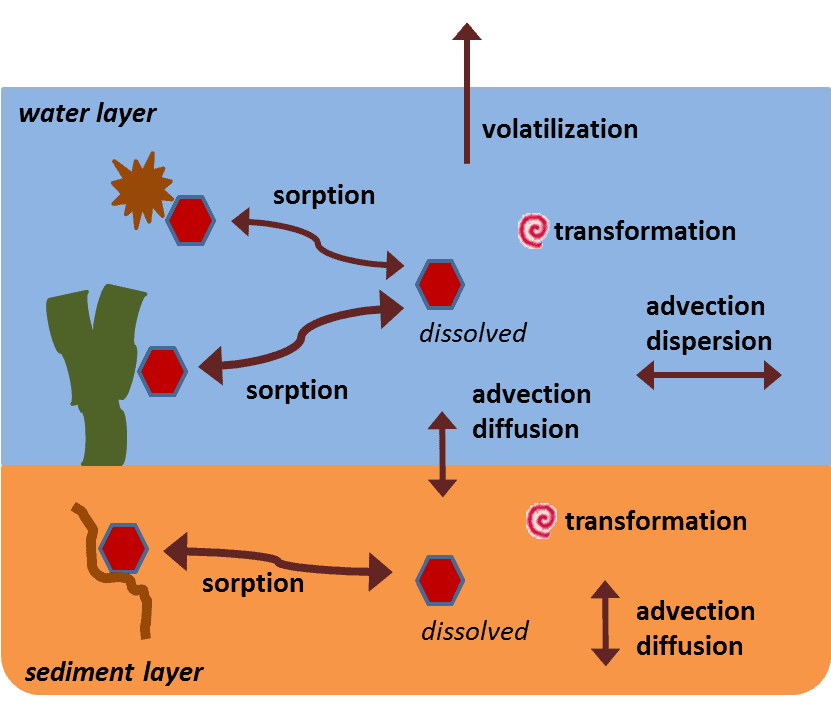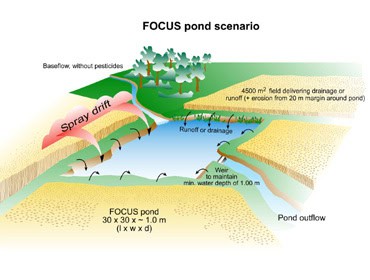TOXSWA is a pseudo-2-dimensional model, describing pesticide behaviour in a water layer and its underlying sediment at the edge-of-field scale. TOXSWA is the acronym for TOXic substances in Surface WAters. TOXSWA calculates Predicted Environmental Concentrations in surface water to support the pesticide registration procedures in the Netherlands and in the EU since 2003.
Aquatic exposure assessment
TOXSWA v1.2, simulates constant water depths and discharges. In FOCUS_TOXSWA water (and pesticide) fluxes from drainage or surface runoff from a small upstream catchment basin and an adjacent field can run into a ditch or small stream. FOCUS_TOXSWA is able to simulate the resulting transient flow regime with rapidly varying discharges and water levels in the ditch or small stream. FOCUS_TOXSWA is coupled to the MACRO and PRZM models to simulate exposure concentrations in the FOCUS Surface Water Scenarios, used in the EU registration procedure.

TOXSWA considers the processes of transport, transformation, sorption and volatilisation of pesticides. The water layer contains suspended solids and aquatic macrophytes. The sediment layer is characterised by porosity, organic matter content and bulk density, that vary with depth. Sedimentation and resuspension of suspended solids are not considered.
In the water layer, pesticides are transported by advection and dispersion. In the sediment, diffusion is included as well. Transformation depends on temperature. The transformation rate covers the combined effects of hydrolysis, photolysis and biodegradation. Sorption to suspended solids and to sediment is described using the non-linear Freundlich equation. Sorption to macrophytes is described using a linear isotherm. Pesticides are transported across the water-sediment interface by upward or downward seepage and by diffusion.
TOXSWA is also part of the GEM, SWASH, DROPLET and CASCADE applications.


Status A
TOXSWA (FOCUS_TOXSWA version 5.5.3) is in compliance with the Status A quality level for models and databases of Wageningen UR, i.e. conform to requirements for software robustness, software and model performance tests, documentation of the concepts and user documentation, read more (Dutch).

